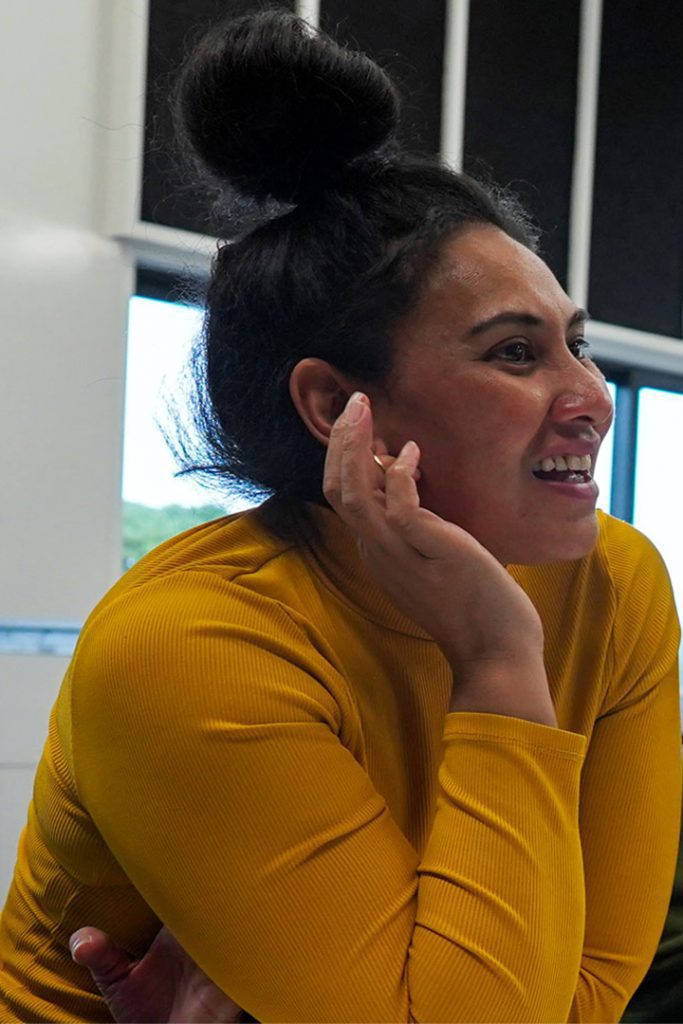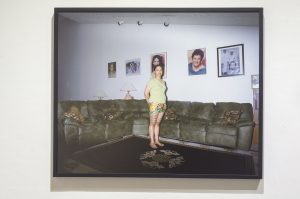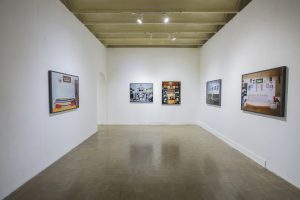Edith Amituanai (Samoa-Auckland)
Edith Amituanai (born 1981 in New Zealand) is a Sāmoan photographer working in Tāmaki Makaurau, Auckland. From interiors to driveways to communities, Amituanai’s practice is concerned with the environments that shape who we are. During 2008–2019 Edith worked on interior series of Sāmoan transnational community and has taken her to Sāmoa, New Zealand, France, Canada and the United States, each location and subsequent generation revealing new and dynamic ways that culture does and does not travel with people as they move around the globe.
In 2008 she was nominated for the Walters Prize for her series Dejeuner that examined a new Pacific diaspora, expatriate New Zealand Sāmoan rugby players living and working in Montpellier, France and Parma, Northern Italy. She has exhibited extensively in galleries and museums across Aotearoa and internationally in Australia, Austria, Taiwan, Germany and France. In 2019 her work was included in the Transits and Returns exhibition at the Vancouver Art Gallery. Her artwork is held in national collections including Auckland Art Gallery Toi o Tāmaki, Museum of New Zealand Te Papa Tongarewa, Christchurch Art Gallery and Govett-Brewster Art Gallery.
“Interiors from Anchorage, Apia, AKL” series “Rob & Harry” (2004); “Gallony Ave” (2007); “Diamond” (2008); “The Manu Lounge” (2006); “Millennial” (2008)
Photography | Variable size
The Oceanians hold a strong belief in their ancestral spirits, which they represent in the form of totems and objects serving as the symbol of the relationships between those who are living and those who are dead. Although some Oceanians have left their birthplace, built lives someplace new, and become a part of global diaspora, the spirits and stories from their ancestral lands remain an important part for display in their houses. Across the world, the concept of diaspora has always been associated with the idea of “home”. There is a conceptual shift of home as a physical space to an imaginary space that can store imagination and spirits from faraway places.
Edith’s work provides an overview of Diaspora’s lives in the Oceania Region through photographs of living rooms of Diaspora families in New Zealand. With these photographs, Edith shows juxtaposition of the cosmology of immigrants’ lives: a modern house equipped with devices of today’s where the symbols of modern religions are placed side by side with the ubiquitous artifacts representing their relation with the villages they left behind. Among the decorative pictures, family photos, or wall coverings, these rooms become a universal imagination of past and present, of the seen and the unseen, of tradition and technology, as well as various other contradictions that converge and enrich a building of identity. Edith gives the silent room a living narrative that is easily relatable to the lives of people in Indonesia—Yogyakarta, more precisely, where relationships with ancestral spirits are still preserved to this day and manifested in many ways.
She makes an interesting choice of taking pictures of rooms in these houses in order to show how cosmology is rendered in daily life; domestic rooms that cherish a long history, instead of solely seen as a shelter for a family. The narrative, developed within the framework of interpreting history and cosmology, is constructed from the reality of ordinary people, from the intimacy and affection with unseen individuals in the photographs, which ultimately bring forth a cross-cultural imprint presented in the narrative. Domestic rooms—often hidden and invisible—become an entry point for discussing the history of migration, mobility, new identity growth, and diverse creole cultures.
Edith’s works narrated the daily life of the Oceanian diaspora community in the middle of urban society where they built their new life. In this series, Edith explored the personal space of Samoan descent families in Anchorage, Apia and Auckland. Her observation about the interiors is not only as a physical house but also as a personal, spiritual and intimate imagery of home.
Colonialism passes down the assumption of neatness in a minimalist white space. Edith’s work also shows diasporic longing which tries to decolonize ways of thinking, starting from personal space. In some Indigenous Oceanian cultures, they tend to avoid blank space in any material because the believe it is a slot for negative entities.
Edith Amituanai (born 1981 in New Zealand) is a Samoan photographer working in Tamaki Makaurau, Auckland. From interiors to driveways to communities, Amituanai’s practice is concerned with the envirounments that shape who we are. During 2008-2019 Edith worked on interior series of Samoan, New Zealand, France, Canada, and the United States, each location and subsequent generation revealing new and dynamic ways that culture does and does not travel with people as they move around the globe.



